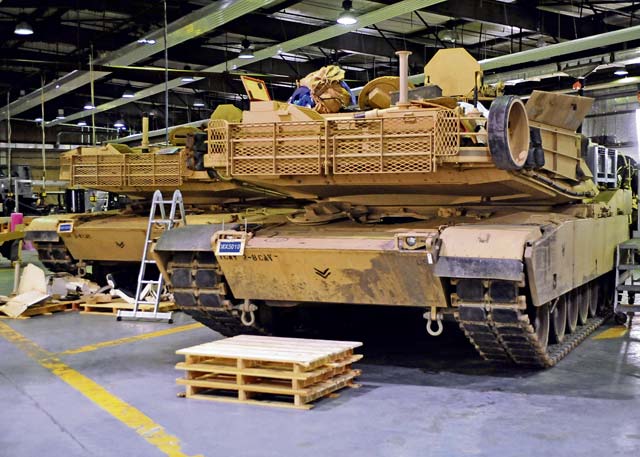
Multinational training exercises bring Soldiers and equipment from around the world together for a realistic training experience. After weeks of hard work and equipment use, it is time for the Soldiers and their gear to go home. One organization in Kaiserslautern makes equipment retrograde easy.
The United States continues to demonstrate its commitment to the collective security of its NATO allies and support for its partners in Europe in light of the on-going Russian intervention in Ukraine, with assurance exercises and training activities in Poland and the Baltic region taking place for the next few months and beyond.
The 21st Theater Sustainment Command’s Theater Logistics Support Center-Europe is responsible for retrograding some of the equipment used during Operation Atlantic Resolve.
Members of TLSC-E are responsible for retrograding 15 M1A2 Abrams tanks belonging to 1st Brigade Combat Team, 1st Cavalry Division back to the U.S. The equipment arrived at Kaiserslautern Army Depot by rail from the Baltic region of Europe.
Upon arrival, TLSC-E employees off load the tanks from the train cars and stage them in preparation for agricultural cleaning and retrograde, said Gene Warren, deputy general manager of TLSC-E.
“The advantage of executing this mission here at the Kaiserslautern Army Depot is the fact that we have a railhead, drivers, mechanics, personnel experienced in agricultural cleaning and qualified customs inspectors right here on site,” Warren said. “We have the capability to download each vehicle from the railcars, drivers to get them to the staging area and maintenance shops, mechanics to pull and reinstall the power packs, and customs inspectors to certify each vehicle prior to retrograding the vehicles to the port. It’s really a one-stop shop for these tanks to go home.”
The next step for the vehicles is a thorough internal cleaning. Mechanics and repair specialists inspect and remove all applicable electronics, seating and other hardware from
inside the tank’s cabin and scrub every inch. This process, due to its complexity, can take over a week, said Michael Hofrichter, TLSC-E Supply Activity Europe mechanical shop supervisor.
“An agricultural cleaning, the kind of cleaning we do before equipment goes home, serves two purposes: ensuring no destructive pests or other foreign material enter the U.S. and cause damage and ensuring our Soldiers have clean operational equipment at home station,” Hofrichter said. “Our staff is very thorough in their work, both removing hardware and cleaning.”
Once the inside of the tanks are cleaned, their power pack is removed in preparation for a trip to the TLSC-E wash rack. The hull of the vehicle is cleaned, the power pack reinstalled and the tank is ready for inspection by customs agents. Once inspected and certified, the vehicles are ready to go home.
“Our Soldiers deserve the very best vehicles in the most pristine condition. That is our goal at TLSC-E,” Warren said.


